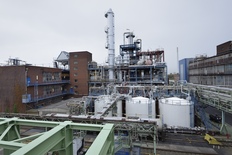
Expansion Overview
Specialty chemicals company LANXESS has completed the expansion of its cresol production plant in Leverkusen, Germany. The project includes a newly constructed reaction system and a second 46-meter-high distillation column, increasing capacity by 20%. The expansion required an investment of around EUR 20 million and took approximately one and a half years to complete.
Applications and Market Growth
Cresols produced at the expanded plant are used in various applications, including agrochemicals, vitamin E, aroma chemicals, resins, and flame retardants. LANXESS anticipates sustainable market growth for cresols and has aligned its long-term planning accordingly.
Improved Production and Energy Efficiency
The new elements of the facility will enable the production of even purer cresols. Additionally, the design allows energy released during production to be fed back into the manufacturing process as steam, highlighting LANXESS' commitment to environmentally friendly production and reduced energy costs.
Aromatics Network
The cresol plant is part of LANXESS' Advanced Industrial Intermediates business unit's long-term asset strategy. The aromatics network, which includes the cresol plant, consists of seven large-scale plants primarily located in Leverkusen, with additional finishing stages in Krefeld-Uerdingen, Dormagen, and Brunsbüttel, Germany. The network processes petrochemical raw materials benzene and toluene into over 50 high-quality intermediates used in various industries.
Production and Logistics
Approximately 500 LANXESS employees work within the aromatics network, which produces and markets nearly 300,000 metric tons of intermediates annually. The integrated plant network in Leverkusen, connected via pipeline systems, offers significant productivity and logistics advantages. Facilities in Dormagen, Krefeld, and Brunsbüttel are connected by rail and road transport, further optimizing logistics and energy deployment.
